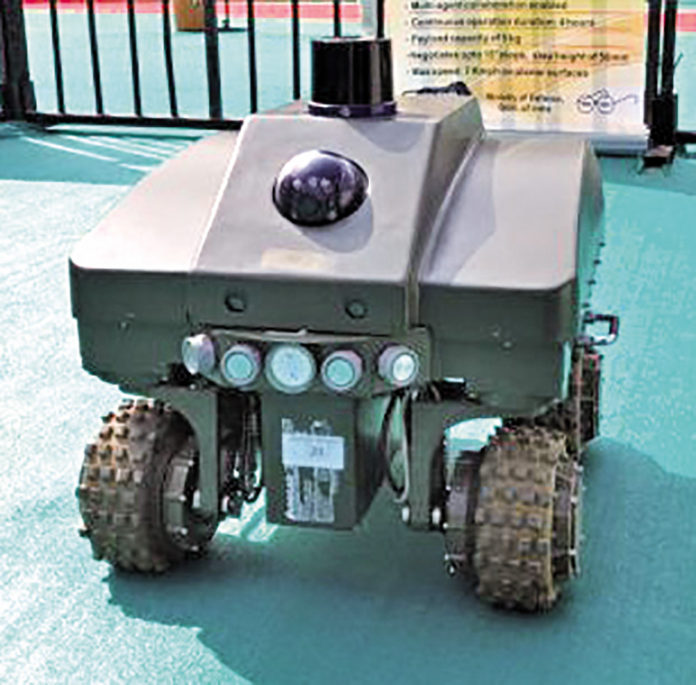India’s Homemade Anti-Ballistic Missile Shield Ready
India’s indigenous ballistic missile defence (BMD) system has reportedly been completed with the Indian Air Force (IAF) and the Defence Research and Development Organisation (DRDO) seeking government approval to install and activate the system near the country’s capital, New Delhi.
The IAF, which is responsible for the country’s air defence, and the DRDO, which has developed the system, will now move a joint proposal for the government’s clearance.
Once the permission has been granted by the government, it will take three to four years to install the BMD system. Furthermore, it was up to the government to extend BMD to the country’s financial hub, Mumbai.
Neither DRDO nor the IAF have publicly commented on the purported completion of the BMD system.
India kick started its BMD program in 1999 following the Kargil War and in response to China and Pakistan’s expanding missile arsenals. The BMD system is two-tiered. The first layer is the Prithvi Air Defence (PAD)/Pradyumna and Prithvi Defence Vehicle (PDV) interceptors designed to destroy missiles at Exo-atmospheric altitudes of 50-180 kilometres. (The PDV will reportedly eventually replace the older PAD/Pradyumna Ballistic Missile Interceptor.)
The second layer consists of the single stage solid rocket-propelled AAD/Ashwin interceptor missile designed to shoot down incoming enemy missiles in the Endo-atmosphere at altitudes of 15-40 kilometres.
India’s indigenous BMD system can reportedly intercept medium range ballistic missiles. PAD and PDV are designed for mid-course interception, while AAD is used for terminal phase interception system after missiles enter the earth’s atmosphere.
DRDO last successfully tested an AAD interceptor missile against a medium-range ballistic missile target in August 2018. The organisation also test fired the AAD in December 2017. Additional tests of the AAD and PDV interceptors were conducted in March and February 2017 as well as in May 2016 and November 2015 respectively. In past tests, Prithvi-II or III tactical surface-to-surface short-range ballistic missiles usually stood in as ballistic missile targets.
India also conducted its first successful anti-satellite (ASAT) test, dubbed “Mission Shakti,” in March 2019. DRDO fired a modified version of the PDV anti-ballistic-missile interceptor, a so-called PDV Mark II missile to destroy a satellite orbiting at 285 kilometres in altitude. Some analysts have speculated that this will provide India with the capability of Exo-atmospheric interception of intercontinental-range ballistic missiles.
Army May Soon Get Robot Option For Recce Ops
Robots on wheels, robots on tracks and robots resembling a ball, not unlike a robotic character seen in the new Star Wars films may soon be rolling out to join Indian Army troops.
For the last three years, Bangalore-based DRDO lab, the Centre for Artificial Intelligence and Robots (CAIR), has been perfecting four different models of mobile robots designed to infiltrate military and combat zones, map the area and help friendly troops punch their way in.
The ‘Sentry’ is a four-wheeled robot which looks almost spider-like with a large central eye and a battery of sensors in front. The unit is designed to probe flat or semi-flat landscapes for the military.
The second machine, called ‘Mini-UGV’ is a squat, tracked robot resembling a large, toy tank designed to infiltrate buildings occupied by terrorists and survey the various floors.
Both of these models are completely autonomous, which means that if you give them a destination, they will create their own waypoints and chart a course to the destination using their inbuilt Artificial Intelligence module.
The ‘Sentry’ is also capable of patrolling a medium-sized perimeter constantly for as long as the battery held a charge. The maximum battery endurance of both machines is about four hours.
Both systems use a battery of sensors, including GPS, 360-degree cameras and an infrared sensor.
The operational doctrine has already been formulated for all the robots. Eight of these various robots are designed to operate as a team. Each robot has something called ‘multi-agent collaboration.’ This means they can talk to each other.
Both machines have completed testing and are ready to be deployed.
‘Mirchi Bomb’ Developed
DRDO’s Defence Research Laboratory (DRL) in Tezpur has come up with a range of devices that can be used in different situations of low intensity conflict. From chilli spray, which can be kept in a woman’s purse for self defence to grenades that can be lobbed to control crowds or manage hostage situations, there are now a range of products-a mirchi bomb for every situation.


DRDO, which had first identified Bhut Jolokia as the hottest chilli in the world, had been working for some years to tap the fire of the chilli.
The product was first conceptualised in 2010 and now the lab has it in a range of packaging. The larger grenades can be lobbed into crowds to control mobs. They also come with a thin hose which can be pushed under a door into a room with hostages and abductors. Several state police forces have tested the products, so has the National Security Guard (NSG). The aim was to make a weapon that would only target the ocular system and not the respiratory system. The product, which comes as a non explosive, eco-friendly and non-toxic stream, has minimal side effects, which go away within a few hours.
Bhut jolokia is a sensitive plant which only grows in exacting conditions of soil, temperature and rainfall, to yield the kind of fire that once put it at the top of the Scoville scale, which is used to measure the fire in chilli. Because of the difficulty in getting a steady and large supply of capsaicin from the plant, the laboratory now bases its products on the chemical alone, which is not extracted from the plant, but has the same chemical formula. Bhut jolokia has slipped several ranks on the hottest chillies of the world list, most of the newer entries are commercially grown hybrid varieties.



















